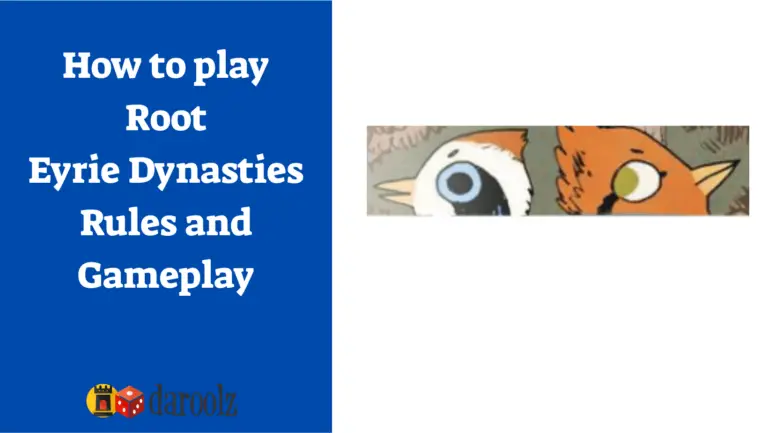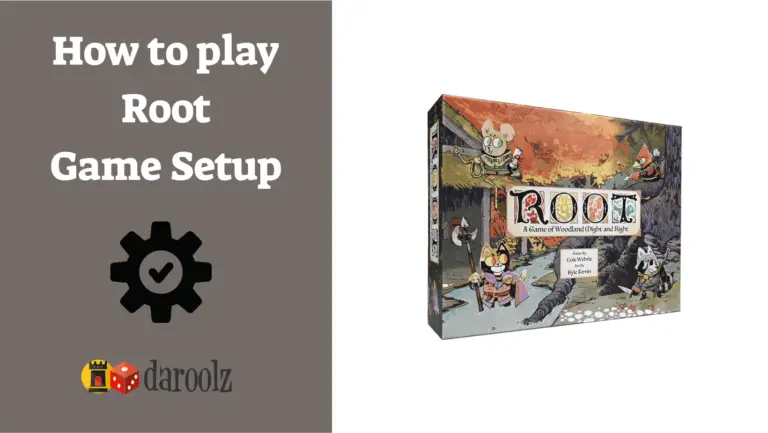How to Play Root Board Game Rules – Key Game Concepts
– Setting up a Root game
– Root gameplay in simple steps
– Root game concepts
– Root Marquise de Cat Gameplay and Rules
– Root Eyrie Dynasty Gameplay Rules
– Root Woodland Alliance Gameplay Rules
– Root Vagabond Gameplay Rules
Map

The map comprises of 12 clearings and are connected by paths.
Map Movement
- You can move from clearing to clearing that has a path connected
- When moving, take ANY number of your warriors from one clearing to a clearing
- You can only move from and to a clearing that you RULE
- You RULE a clearing if you have the MOST combined warriors and buildings there
- On a tie, there is no ruler
Clearings
- Each clearing has 1 to 3 slots
- Slots hold buildings that players place
- Clearing with no open slots cannot hold more buildings
- Each clearing has a SUIT: fox, rabbit or mouse and represents the community living there
The Cards
Draw cards from the top of the shared deck, and discard to a shared discard pile. If the deck is empty, shuffle the discard pile and form a new deck.
Each card comprises of the following suits: bird, fox, rabbit, or mouse.
Most cards also have an effect you can craft.
Birds are wild cards
Bird cards can used as a card of another suit.
Forced Effects. If you are asked to discard or give cards of non-bird suits, treat your bird cards as a prompted suit.
Reverse Substitution. If you are prompted to spend, discard, take, or give a bird card, you cannot substitute a card of another suit.
Ambush cards
There are five ambush cards: one mouse, one rabbit, one fox, and two birds. You
may spend an ambush card for its suit, but it does not have a crafted effect. You may also play one in battle to deal hits.
Dominance Cards
There are four dominance cards matching the four suits. You may spend a dominance card for its suit, but it cannot be crafted. You may also play one to permanently change
your victory condition.
How Do You Battle in Root the Board Game?

The following steps outline how factions battle in the Root Board Game.
-
Choose Clearing and Faction pieces to attack
You battle other players to remove pieces from their map. Choose any clearing where you have warriors and attack another faction (the defender) with any pieces there.
-
Defender May Ambush

Defender may play Ambush Card (may be played even if clearing is defenseless) matching the clearing of the battle.
Attack can foil the Ambush by playing matching Ambush Card.
If Ambush is not foiled, 2 hits are dealt to the attacker. Hits are not limited by the number of warriors defending (e.g. hits are dealt even if the clearing has no warriors (defenseless)). Battle ends if all attackers are removed.
-
Attacker Rolls 2 dice
The attacker deals hits equal to the higher roll, and the defender deals hits equal to the lower roll. Number of hits cannot be more than the warriors in battle.
-
Remove pieces
Both players choose which pieces to remove, but must remove all their own warriors in the clearing of battle before removing any of their own buildings or tokens there. The attacker deals an extra hit if the defender has no warriors in the clearing of battle, leaving themselves defenseless.
-
Extra Hits
Some effects allow you to deal extra hits.
Extra hits represent superior positioning, tactics, or leadership. They are not limited by the number of warriors in the clearing of battle, so a single warrior could deal multiple hits.





